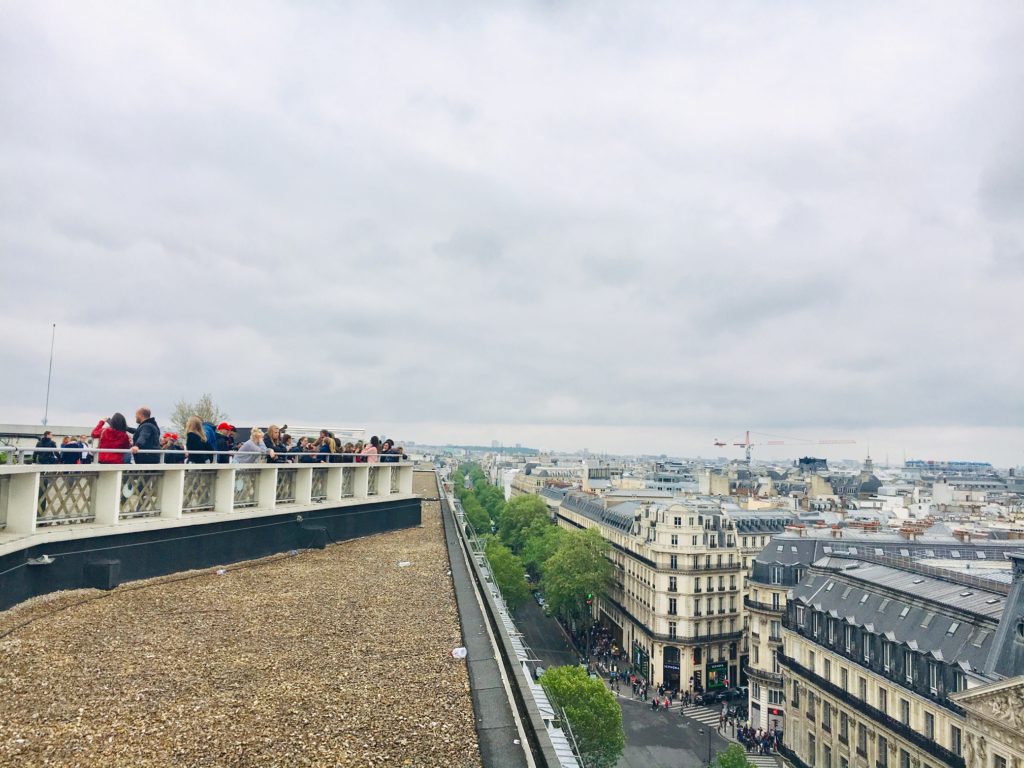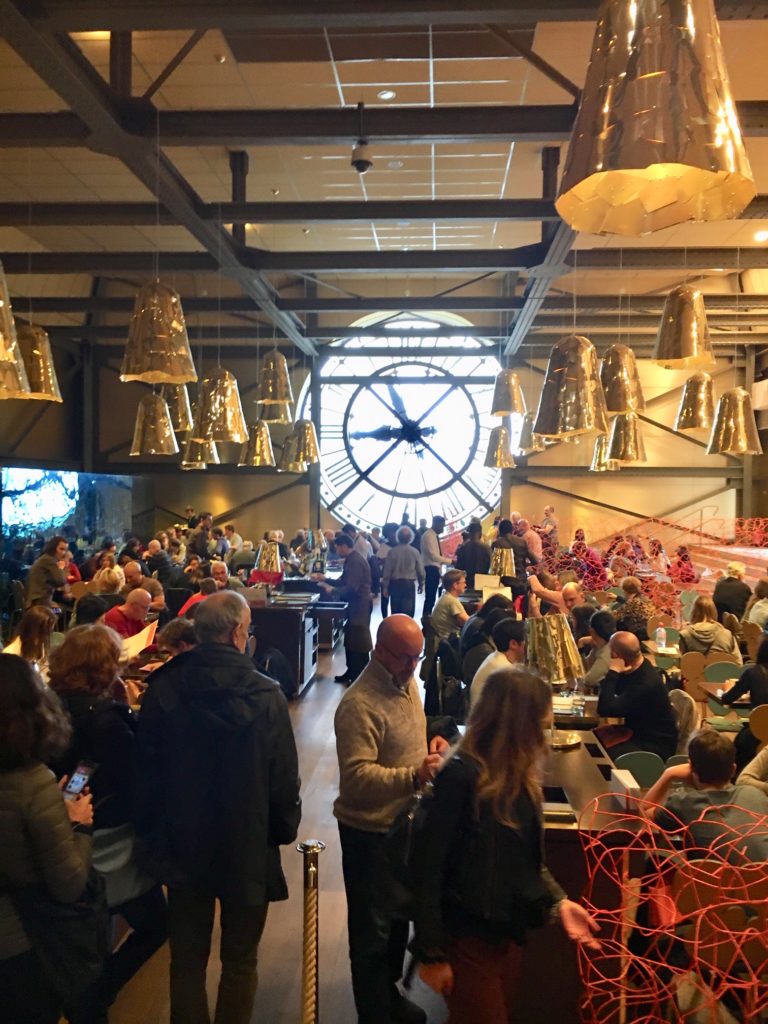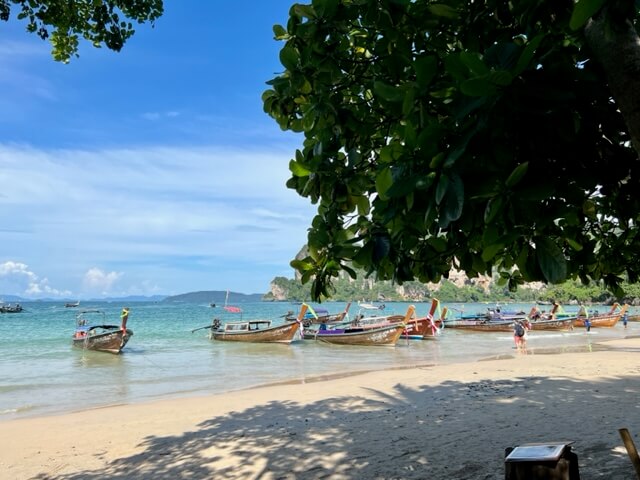
During a girlfriend getaway in early spring, my college roommate and I visited the most famous sights in Paris such as the Louvre, the Notre Dame, the Eiffel Tower, and the Arc de Triomphe. After a while, waiting in long lines with masses of people get old. Yes, tourists and locals are found everywhere, but there are a few places that are not quite as crowded. Whether you are in the mood for a museum, an outdoor garden, shopping or music, Paris has it all. Four of my favorite places to visit include:
Musée d’Orsay

Orsay Museum, seen from the right bank of the Seine river
If you are a fan of the Impressionist period, plan a visit to the Musée d’Orsay. Housed in a gorgeous historic building along the Seine, you’ll find an extensive collection of art from 1848 – 1914. Originally a train station (Gare d’Orsay) built for the 1900 Universal Exhibition, it was designed in the Art Nouveau style and constructed with a glass ceiling because the trains in that period were electric. With multiple levels, it included the latest technological developments like elevators for passengers. Over time, as trains became longer, it fell into disuse because its platforms were too short. At one point, the building was almost demolished to make way for office buildings. Luckily, the government denied permission and by the 1970’s, the idea of using it to house a vast collection of 19th century art works made the most sense. President François Mitterrand inaugurated the Musée d’Orsay on December 1, 1986.

Yes, this museum attracts a lot of visitors too, but the lines are shorter and if you arrive one hour before closing Tuesday – Sunday, and 45 minutes before closing on Thursday, you can get in for free. Just don’t come on a Monday when it’s closed. Out front, a large bronze sculpture of an elephant serves as a great meeting place and begs for a photo. Purchase a museum pass online in advance, bypass the general visitor line and enter the building quickly through a separate entrance. The light and airy space of the restored train station highlights the vast collection well.
On the ground floor, an intriguing array of statues, a small café and a bookstore are located. There is also an elegant restaurant on the first floor that serves French cuisine. Up a staircase, the second floor houses the Post-Impressionists. The third floor holds the gallery of the Impressionists. Just beyond it, there is a stylish eatery called Café Campana which serves lighter meals, salads and pastries. For those with disabilities, the museum is wheel-chair accessible. It has 12 elevators and lifts, 10 escalators, and on the website, a list of nearby disabled parking spots.

Many of the most colorful and beloved famous paintings are here. On the plane ride over, my roommate and I had agreed that we wanted to see this museum. Among the Impressionists, I loved seeing the graceful movements of the ballerinas from The Dance Class by Edgar Degas as well as the lively working class Parisians dressed in their finery at Montmartre in the Dance at the Moulin de Gallette by Pierre-August Renoir. Among the Post-Impressionist paintings, I found Vincent van Gogh’s La Méridienne depicting sleeping figures by a haystack and Paul Gaugin’s rendering of native Tahitian girls calmly lounging on the ground in Arearea both beautiful and restful. Walking through the gallery, I was mesmerized by the bronze sculpture of the little ballerina. I stopped to look at it from all sides because Degas captured every detail so well.

(Photo courtesy of Musee d’Orsay)
After spending hours inside seeing paintings of nature and people, it was time to move outdoors.
Tuileries Gardens

A short walk over the bridge and across the Seine from the Musée d’Orsay, a grand garden stretches between the Louvre and the Place de la Concorde. Filled with flowers, trees, bushes and statues, it’s easy to imagine painters setting up an easel to capture the beauty. Green chairs scattered throughout the park beckon visitors to sit and enjoy nature.

We sat for a long while here because it was so peaceful. The flowers had just started to bloom. Within another week or two, the garden would have been quite full and even more beautiful to photograph.

We strolled to the far end of the garden away from the Louvre towards the Paris ferris wheel. It’s a great spot to people watch.
Galeries LaFayette

Shopping in Paris was another item on our to-do list. We visited the Avenue des Champs-Élysées earlier, and enjoyed browsing both high-end (Louis Vuitton, Tiffany & Co., etc.) and mid-range stores well known in the US (Abercrombie, Sephora, etc.). My roommate’s daughter suggested we see the flagship store of Galeries Lafayette on Boulevard Haussman, an upscale chain that started in France. There are two stores that each take up a large city block. The women’s store is across the street from the men’s store. The women’s store has a stunning glass and steel dome and Art Nouveau staircases. It reminded me of shopping at Harrod’s in London. If you are interested in seeing the latest fashions, go by on Friday afternoon around 3 pm. They advertise a 30-minute fashion show every Friday. It’s a ticketed event so head there early.

Although everyone tries to take a picture of Paris from the top of the Eiffel Tower or the Arc de Triomphe, my roommate’s daughter mentioned there’s a great view from the roof of Galeries Lafayette. And, as she pointed out, you can get the Eiffel Tower in the picture. Ironically, I couldn’t avoid the red crane nearby which suggested a construction project was underway. Change is inevitable even in Paris.
Palais Garnier (Paris Opera House)

Before I left Galeries Lafayette, I photographed the city from three different angles from the rooftop. In the last shot, you can see the Paris Opera House right behind the store.
Known as Palais Garnier, the Paris Opera House was built for Napoleon III. This Belle Époque theater, one of the most famous opera houses in Europe, is open to visitors for tours and performances. The building has a lake underneath it and was the inspiration for the Phantom of the Opera.
Gaze at the grand marble staircase and high-ceilinged foyer, and you can imagine the elite of Paris strolling between performances. Make sure you take a moment and look up inside the performance hall, a gleaming seven-ton chandelier and colorful ceiling painted by Marc Chagall will amaze you.
What is your favorite place to visit in Paris? Or if you haven’t been, what would you like to see first?





I miss Paris. Two trips this year have been cancelled because of the virus 🙁 I always enjoy a stroll through Tuileries Gardens when I’m there
I’m so sorry. Missing two trips is really sad. I hope you get to those destinations in 2021 or sooner.
Isn’t Paris magical? I love Musee D’Orsay and all of its impressionistic artwork. I have never been to Galeries Lafayette, but that’s definitely on my list for a future visit.
I agree – Paris is magical. Especially when you see the twinkling lights on the Eiffel Tower at night.